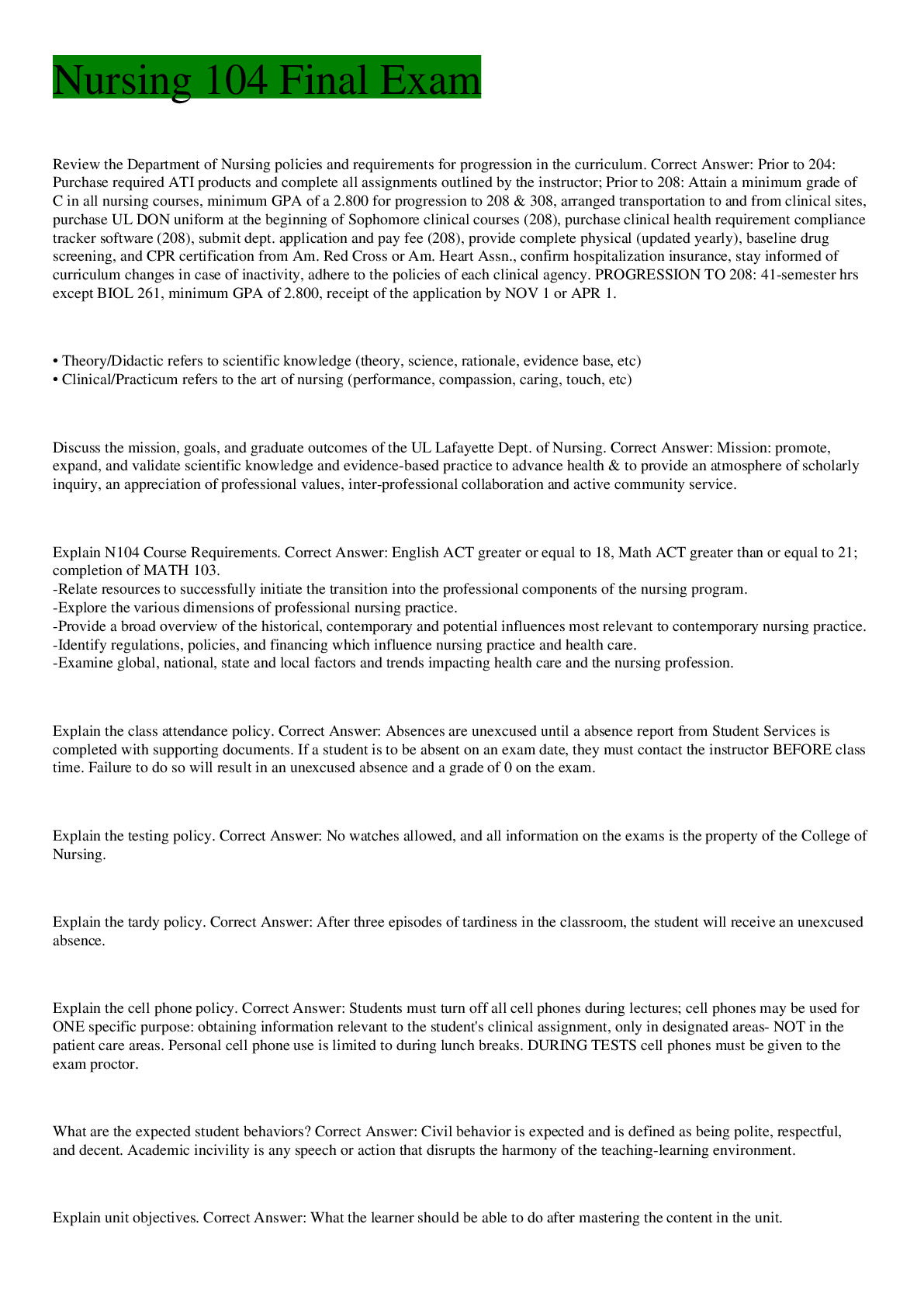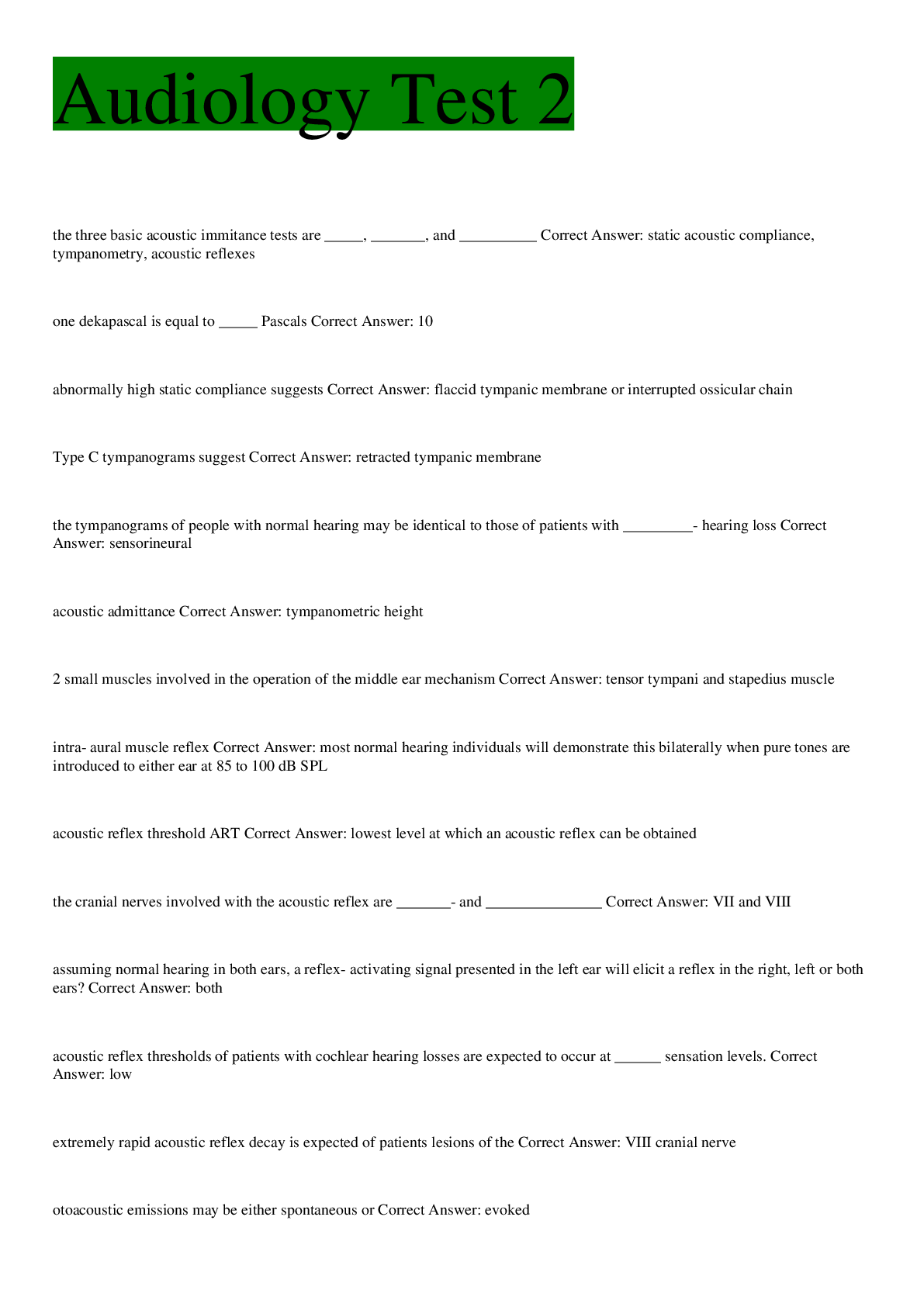NBCOT COTA Exam 2022 Questions and Answers
Document Content and Description Below
OT code of ethics & ethics standards - ANSWER developed to address the most frequently encountered ethical issues in OT across a variety of settings; for employers, consumers, students. concepts of... ethics standards ( 7) - ANSWER Altruism, Equality, Freedom, Justice, Dignity, Truth, Prudence. Altruism - ANSWER placing the needs of others before your own Equality - ANSWER promote fairness in interactions with others Freedom - ANSWER desires of client must guide OT interventions Justice - ANSWER respect and adhere to the applicable laws and standards regarding area of practice Dignity - ANSWER treating each client respectfully and as an individual by enabling client to engage in meaningful occupations- regardless of disability Truth - ANSWER OT practitioner provides accurate information orally and written Prudence - ANSWER using clinical and ethical reasoning skills to make decisions Code of Ethics Principle 1 - ANSWER Beneficence; OT personnel shall demonstrate a concern for the well being and safety of the recipients of service Code of Ethics Principle 2 - ANSWER Nonmaleficence; OT personnel shall intentionally refrain from actions that cause harm Code of Ethics Principle 3 - ANSWER Autonomy/ Confidentiality; OT personnel shall respect the right of individuals self-determination Code of Ethics Principle 4 - ANSWER Social Justice; OT personnel shall provide services in a fair and equitable manner Code of Ethics Principle 5 - ANSWER Procedural Justice; OT personnel shall comply with institutional rules, local, state, federal, and international laws and AOTA documents applicable to the profession of OT. Code of Ethics Principle 6 - ANSWER Veracity; OT personnel shall provide comprehensive, accurate, and objective information when representing the profession Code of Ethics Principle 7 - ANSWER OT personnel shall treat colleagues and other professionals with respect, fairness, discretion, and integrity. Categories of Ethical Problems (3) - ANSWER ethical temptations, ethical distress, ethical dilemmas Ethical temptations - ANSWER occurs when it is difficult to follow through on course of action, when you know its right, because he/she is tempted to go against it Ethical distress - ANSWER occurs when it is difficult to follow through on what the person knows is the right course of action, because policies or procedures Ethical decision making steps - ANSWER 1. determine the type of problem ( ethical issue, distress, or dilemma) 2. Identify ethical or legal issues 3. What facts are known, what needs to be obtained 4. Who's involved that may influence and resolve issue 5. Formulate possible resolutions 6. Identify resources 7. Determine course of action 8. Identify possible results of course of action Ethical dilemmas - ANSWER occur when it is difficult to identify what the best ethical course of action would be because of conflicts that occur when determining the resolution Acronym for correct documentation - ANSWER C.A.R.E C: Clarity A: Accuracy R: Relevance E: Exceptions Types of Documentation - ANSWER Order/Refferal Screening Evaluation Report Intervention plan Written Goals Contact & Progress notes Re-evaluation or Reassessment report Transition plan Discharge summary Order/ Refferal - ANSWER Referral for OT services, sometimes needed by physician to get reimbursed. Screening - ANSWER To identify whether a person would benefit from OT ( chart review & observation) Evaluation - ANSWER The process of obtaining & interpreting data necessary for intervention Intervention plan - ANSWER Summary of evaluation and reccommendations, goals, strategies, duration, intensity, frequency, of OT. OTR responsible but collaborates with OTA Written Goals - ANSWER OTA contributes to goal writing Acronym for Goal Writing - ANSWER COAST C: client O: occupation A: assistance level S: specific task/ condition T: Timeline Acronym for Progress notes - ANSWER S.O.A.P S: subjective information quoted or paraphrased O: objective information from session (measurements, observable data, etc.) A: Assessment P: Plan Standards for Continuing Competence - ANSWER Standard 1: Knowledge Standard 2: Critical reasoning Standard 3: Interpersonal skills Standard 4: Performance skills Standard 5: Ethical practice Standards of Practice - ANSWER Standard I: Professional Standing & Responsibility Standard II: Screening, Evaluation, Re-evaluation Standard III: Intervention Standard IV: Outcomes Areas of Occupation - ANSWER ADLs IADLs Rest & Sleep Work Education Play Leisure Social COTA roles in delivery of OT services - ANSWER COTA may contribute to eval process; performing delegated assessments & delivering reports. COTA must understand eval results COTA must be knowledgeable about clients goals & choose appropriate activities COTA must understand client specific outcomes & document COTA may measure outcomes & offer resources Burn size - ANSWER Adults; the rule of nines- divides the body into 9s to calculate total surface area Child/infant; Lund-Browder Chart- based on age Superficial 1st degree burn - ANSWER Top layer of epidermis Min-Mod pain 3-7 days healing Superficial partial 2nd degree burn - ANSWER Epidermis & Upper dermis Significant pain (wet blisters) 1-3 weeks healing Deep partial 2nd degree burn - ANSWER Epidermis & Deep dermis Severe pain (erythema) 3-5 weeks healing Impaired sensation Increase risk of infection Increased scare risk Full thickness 3rd degree burn - ANSWER Epidermis & Dermis No pain, No sensation Requires skin graft Extremely high hypertrophic scar risk Subdermal burn - ANSWER Full thickness burn, damage to underlying tissue such as Fat, Muscles, Bone Burn Management: Emergent Phase - ANSWER 0-72 hours after injury 1. Sustaining life 2. Controlling infection 3. Managing pain Burn Management: Acute Phase - ANSWER 72 hrs/ until wound heals 1. Infection control 2. Pain management 3. Proper nutrition & hydration 4. Cardiopulmonary stability Burn Management: Rehabilitation Phase - ANSWER Continues with skin grafts and reconstruction surgery as needed for movement and function OT Intervention : Burns - ANSWER Emergent Phase: Splinting in antideformity positions Acute Phase: Splinting/positioning & early ADLs Edema Management - wrapping, elevation, AROM Early ADLs- adaptive strategies Surgical/ Postoperative Phase: Immobilization (3-10 days) Walking (5-7 days) Wrapping with elastic band AROM after immobilization period Rehabilitation Phase: Skin conditioning - lubricating, massage Scar management- bandage Burn Related Complications & Management - ANSWER Contracture; early anticontracture positioning, continuous exercise, serial splinting. Hypertrophic scar; compression therapy Heterotrophic ossification; surgical intervention Pain; education on ROM, pain management techniques, Heat intolerance; accommodations Sun exposure; protection & exposure management Priorities; compression garments Common heart diagnoses - ANSWER Myocardial infarction Coronary Artery disease Congestive heart failure Cardiomyopathies Cardiac Rehab - ANSWER Inpatient/ Phase 1: Monitor EKG, progression of ADLs, MET levels, symptoms of intolerance , etc. Outpatient/ Phase 2: Tolerance & MET levels, weight training, Education, Community/ Phase 3: Stress test, activities & tolerance Common respiratory diagnoses - ANSWER Chronic obstructive pulmonary disease Emphysema Chronic bronchitis Specific testing for hand & UE - ANSWER ROM: goniometer measurements Strength: manual muscle testing, dynamomenter, pinch gauge Edema: volunteer or centimeter tape Vascular : color & trophic changes, pulse, temp, Allens test Sensation: Semmes- Weinstein monofilament Coordination: O'Conner Dexterity Test, nine hole peg, etc. Fractures of the Hand - ANSWER 1. proximal fracture 2. Carpal fracture 3. Avulsion injuries Mallet finger: splint in extension Boutonnière deformity: splint PIP in extension & DIP flexion exercises Swan neck deformity: splint PIP in slight flexion Intervention for Hand fractures - ANSWER Orthotic fabrications Modalities for pain relief (heat, ultrasound, cryotherapy, paraffin, TENS) Exercise to increase ADLs; AROM 3-6 weeks after fracture is fixated Wrist Injuries - ANSWER Median Nerve injury; produces carpal tunnel-like symptoms ( palmar numbness, weakness, numbness from 1st digit to half of 4th) Ulnar Nerve injury Complex Regional Pain Syndrome (CRPS) - ANSWER Pain disproportionate to an injury that is either sympathetically maintained or independent of the sympathetic nervous system Types of CRPS, Symptoms, & Intervention - ANSWER Type 1: developes after noxious events Type 2: developes after nerve injury Symptoms: Allodynia, Hyperalgia, Edema, Contractures, etc. Gentle pain-free AROM, pain control, Edema control, joint protection, Cumulative Trauma Disorder (CTD) - ANSWER Trauma to soft tissues caused by repeated force. Indicated the mechanism of injury but not diagnosis Symptoms & Grades of CTD - ANSWER Muscle fatigue, pain, chronic inflammation, sensory inpairment. Grade I: pain after activity, resolves quick Grade II: pain during activity, resovles @ end Grade III: pain persists after activity, affecting work Grade IV: pain in extremity up to 75% , work is limited Grade V: Unrelenting pain, unable to work OT intervention for CTD - ANSWER Acute phase: reduce inflammation & pain, static splinting, ice, contrast baths, ultrasound, iontophoresis, Subacute phase: slow stretching, progressive resistive exercises as tol. Education action on triggers,. Nerve Injuries & Syndromes - ANSWER A. Radial nerve injury B. Radial tunnel syndrome C. Anterior interosseous syndrome D. Pronation syndrome E. Median nerve injury F. Double crush syndrome G. Carpal tunnel syndrome H. Cubical tunnel syndrome I. De user aim syndrome J. Claw deformity K. Digital stenosis tensynovitis (trigger) L. Sensory reeducation after nerve injury Carpal Tunnel Syndrome - ANSWER Caused by entrapment of the median nerve as it courses through the carpal tunnel. Leads to sensory impairment generally involving numbness & tingling in the thumb, index, and middle fingers. Physical Agent Modalities (PAMs) - ANSWER Cryotherapy, Thermotherapy, Ultrasound, Phonophoresis, Electrotherapy, ion Cryotherapy - ANSWER cools tissues 1-2 cm depth, including ice massage, ice, towels, cold packs, cold immersion baths, etc. Effects include pain relief, decreased edema, decreased muscle spasms, decreased inflammation, Thermotherapy - ANSWER Heats tissue to 1-2 cm depth, including whirlpool, fluids therapy, hot packs, contrast baths, paraffin baths, etc. Effects on patient include increased blood flow, increased muscle contraction, increased pain, decreased muscle spasms, Ultrasound - ANSWER Heats tissue 1-5 cm depth; thermal and non thermal effects. A. Thermal; increase tissue extensibility and blood flow, decreased pain, joint stiffness, muscle spasms, and chronic inflammation. B. Nonthermal; increase protein synthesis, bone healing, decrease inflammation. Electrical Stimulation (TENS, NMES, iontophoresis) - ANSWER A. NMES promotes wound healing, maintains muscle mass, increases ROM, decreases edema, decreases spasms and spasticity. B. TENS primarily controls pain through ; gate control, endorphins release, acupuncture. C. Iontophoresis decreases inflammation and controls pain Splinting - ANSWER An orthopedic device designed, fabricated, or selected to [Show More]
Last updated: 1 year ago
Preview 1 out of 20 pages

Buy this document to get the full access instantly
Instant Download Access after purchase
Add to cartInstant download
We Accept:

Reviews( 0 )
$10.00
Document information
Connected school, study & course
About the document
Uploaded On
Aug 23, 2022
Number of pages
20
Written in
Additional information
This document has been written for:
Uploaded
Aug 23, 2022
Downloads
0
Views
49


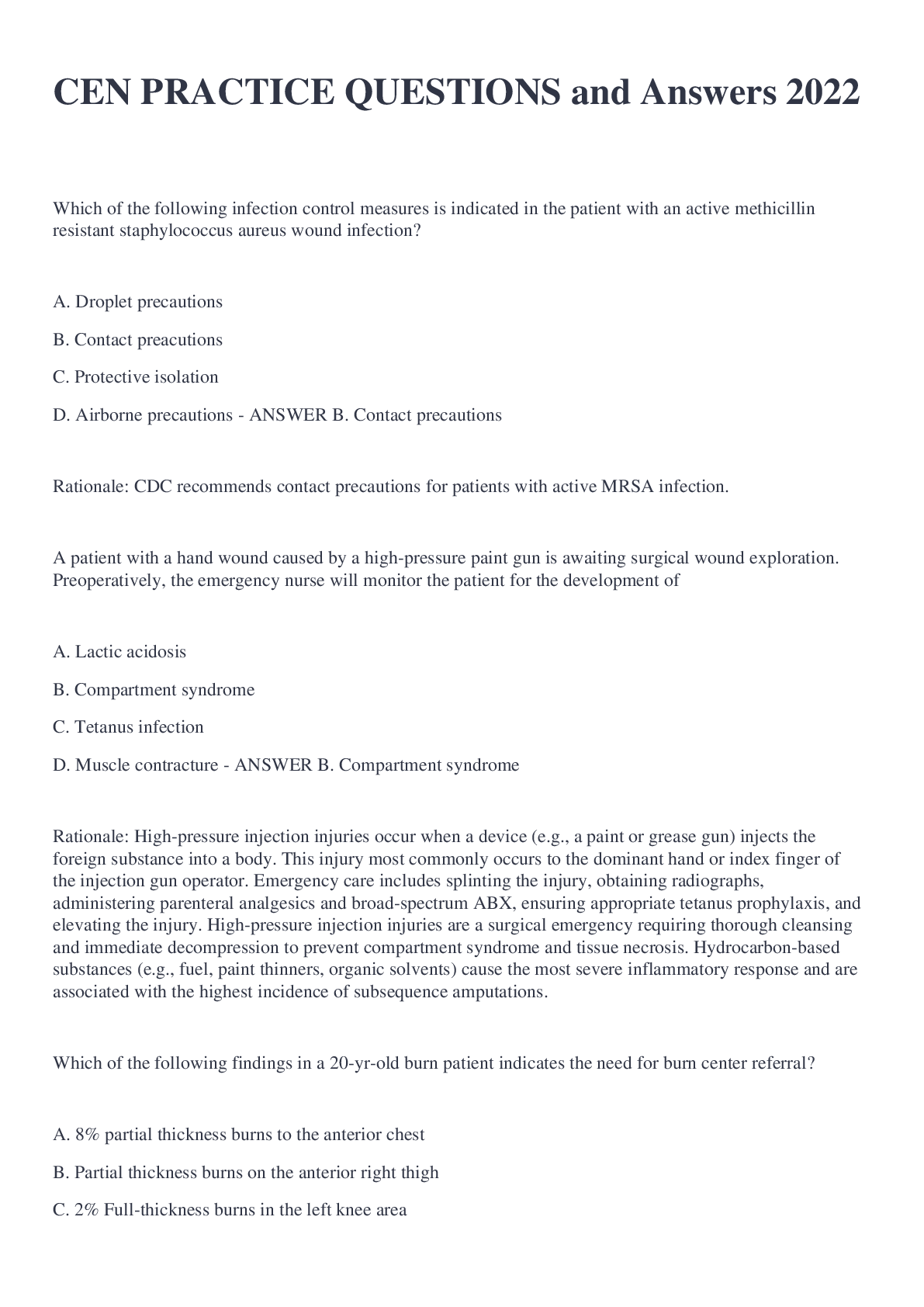


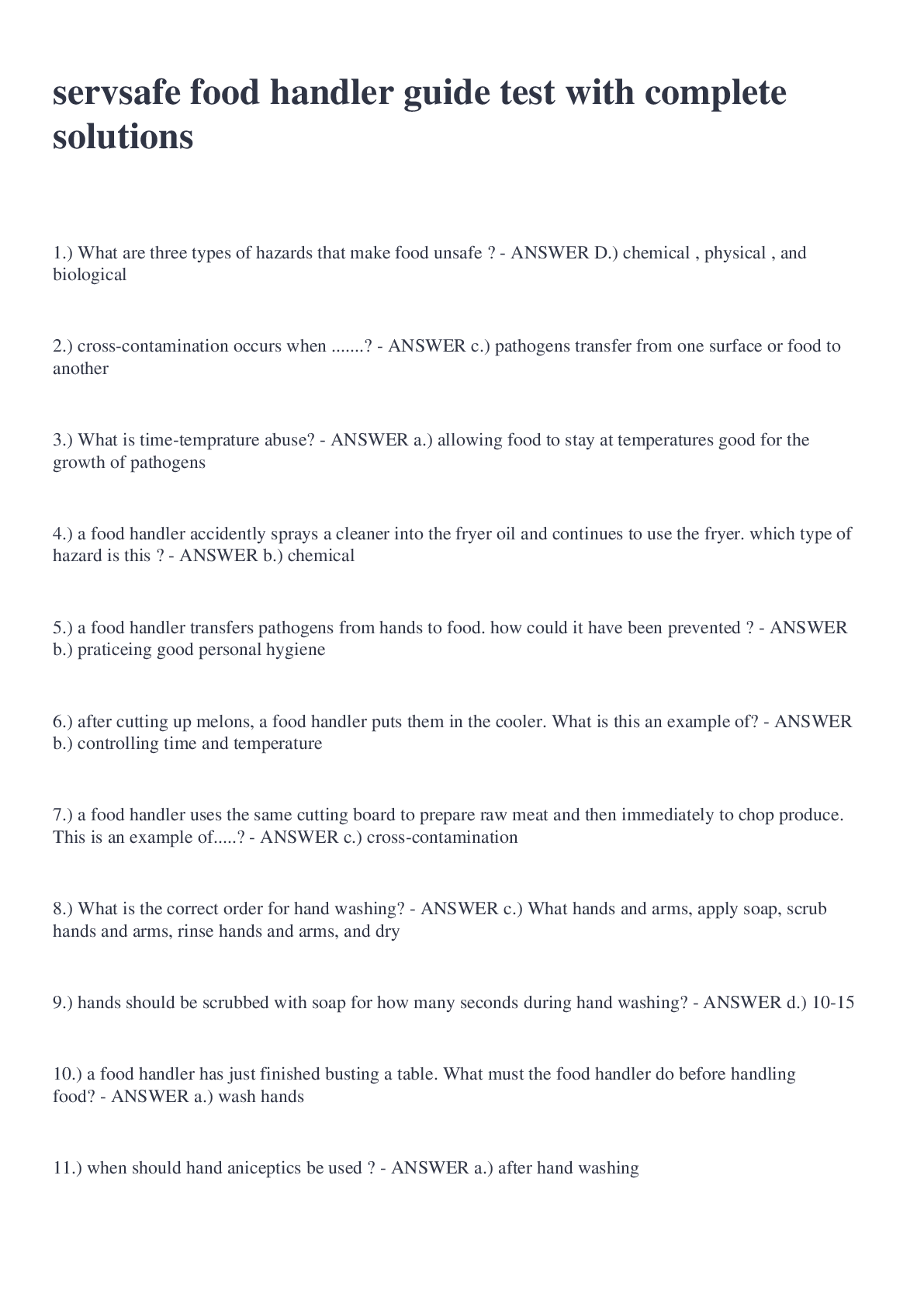


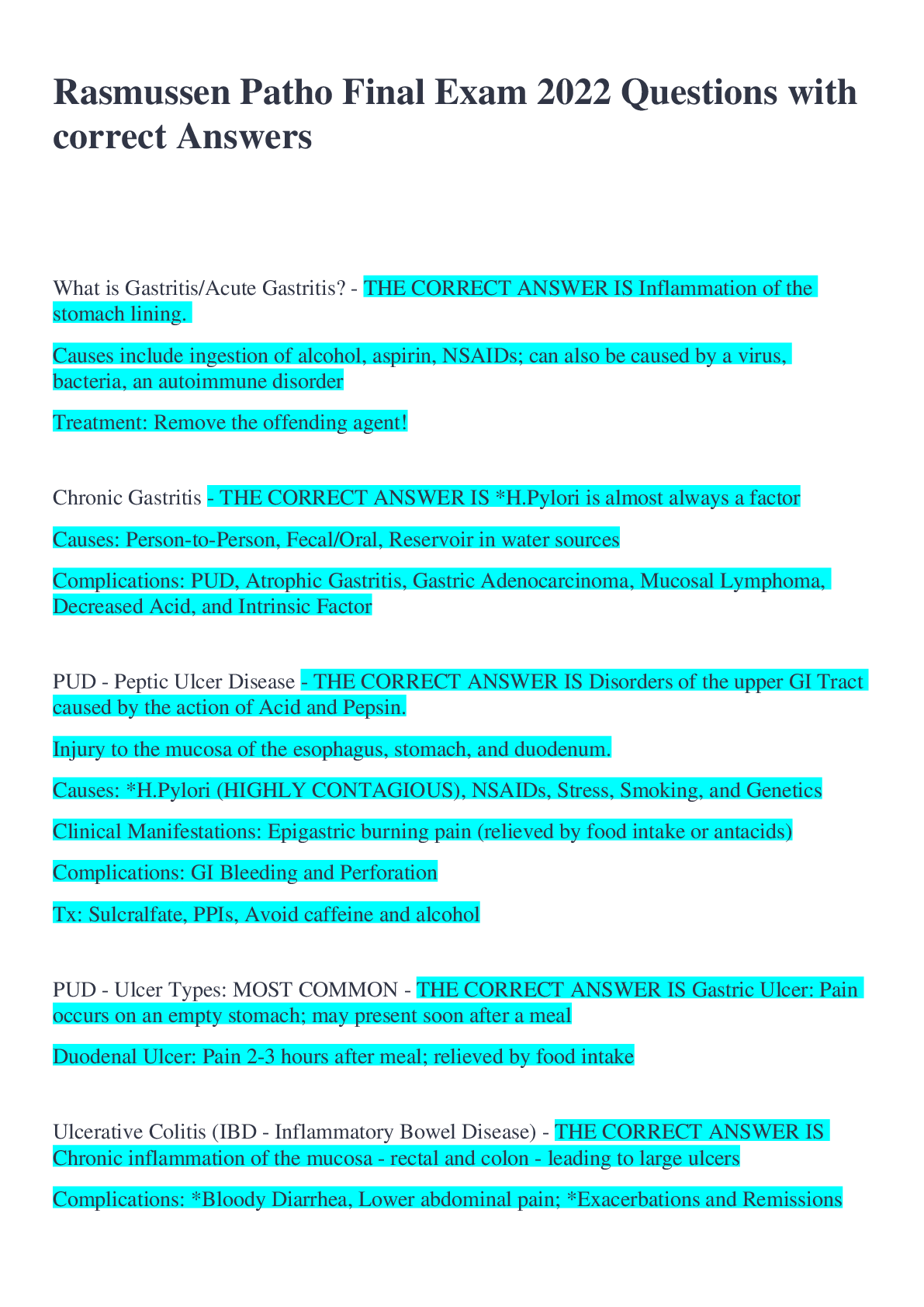
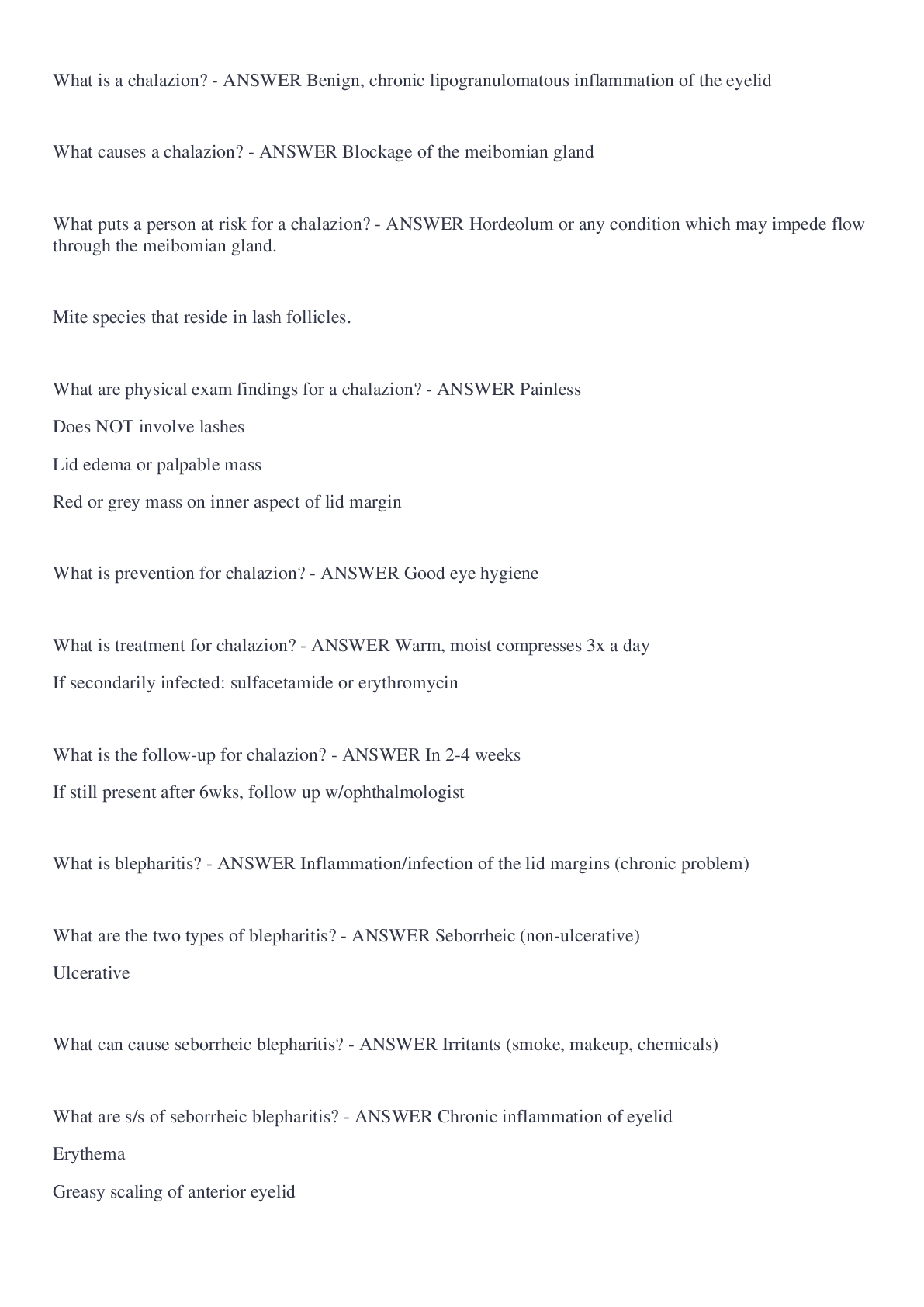
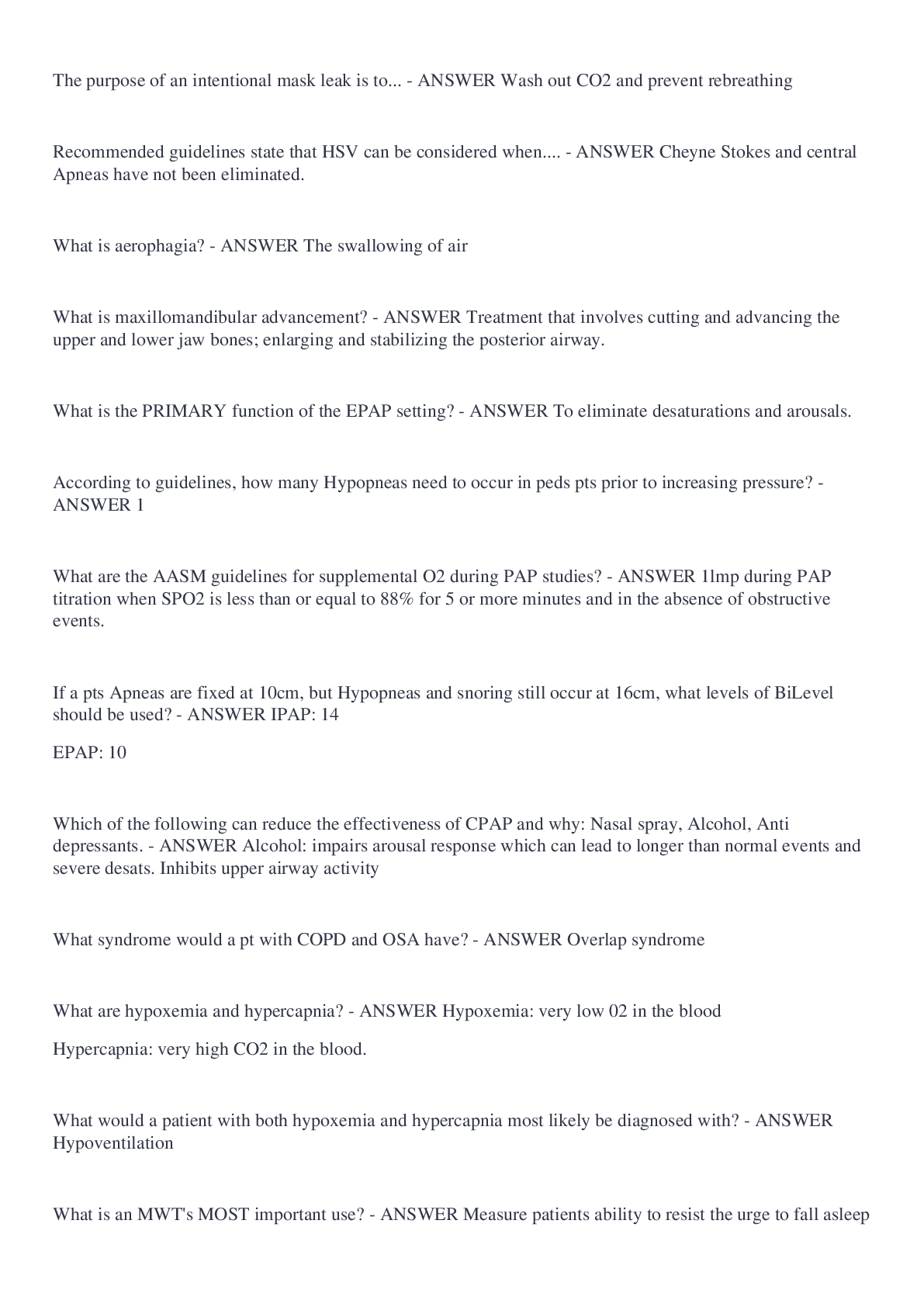





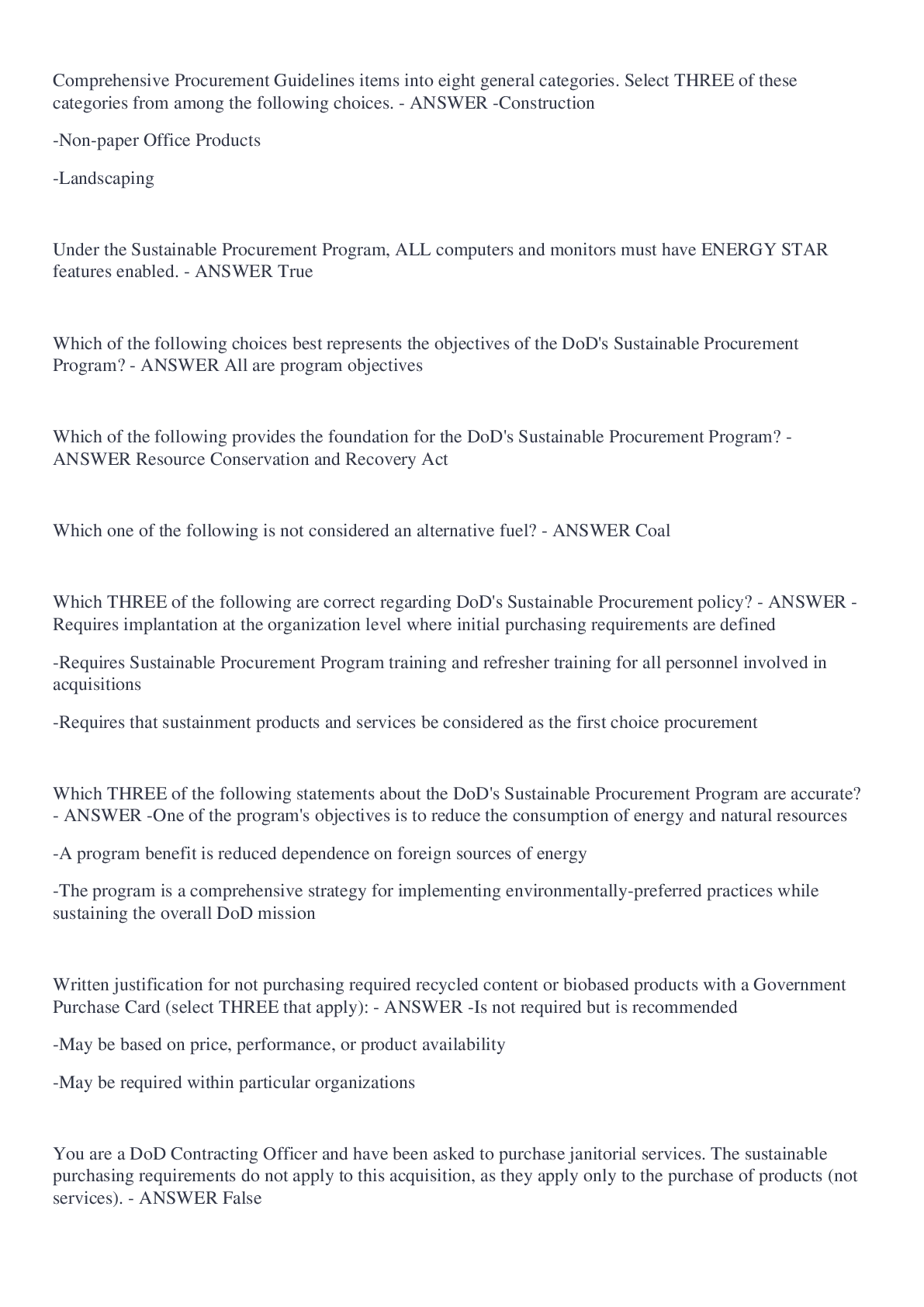
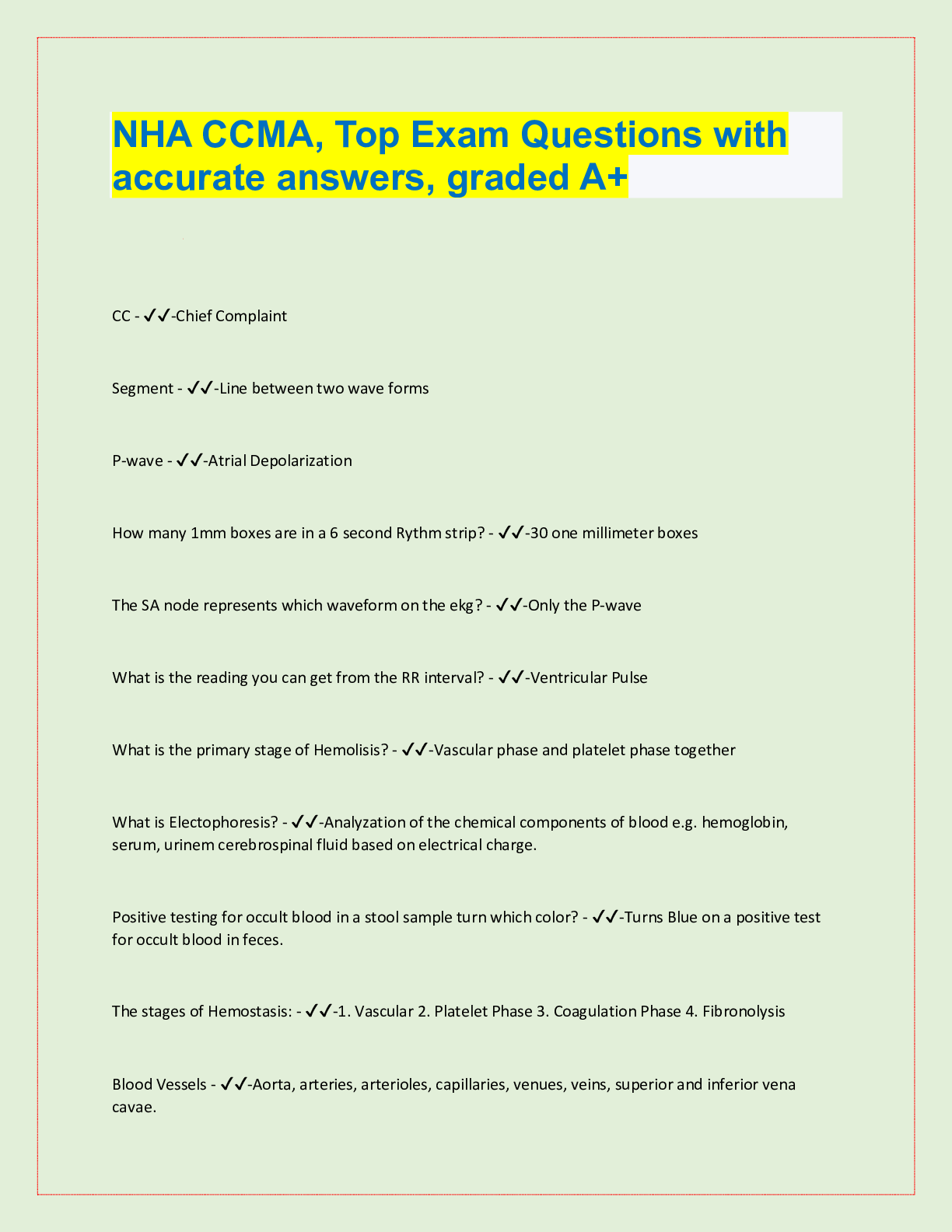
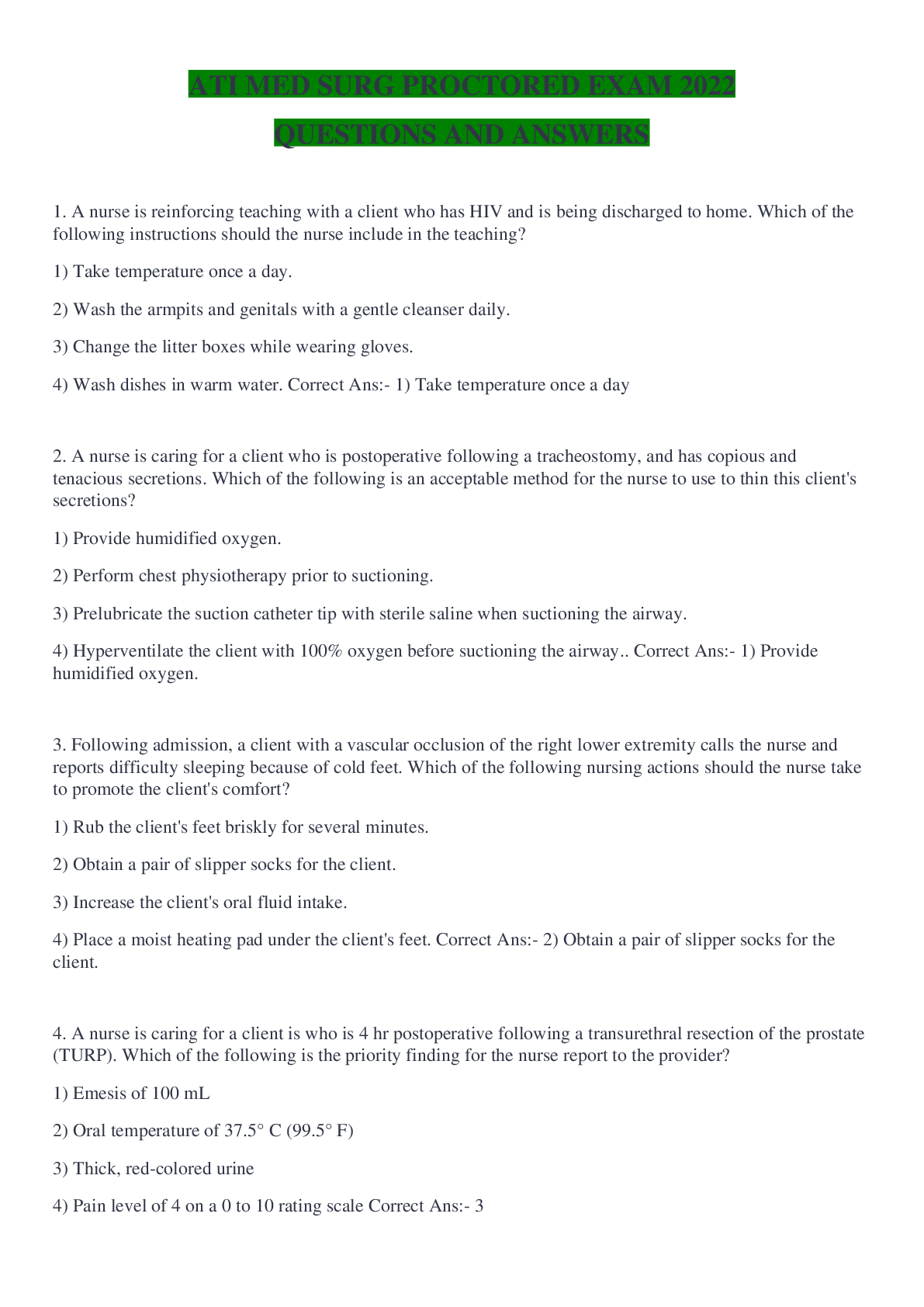

 Final Exam 2022 Questions with 100% Verified Answers.png)
